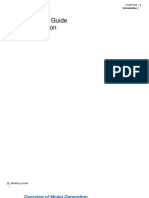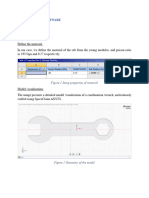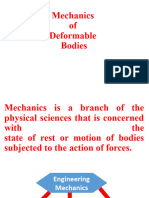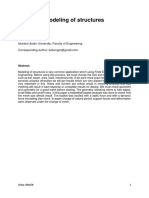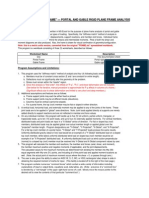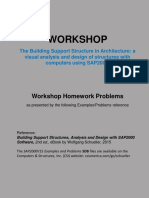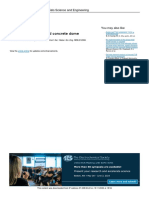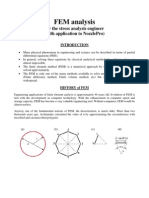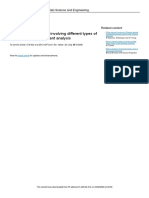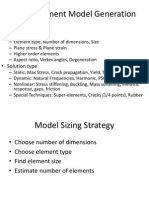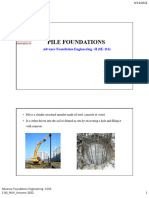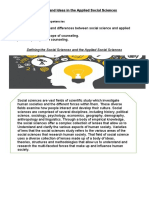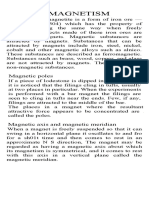0% found this document useful (0 votes)
48 views15 pagesFem Using Fea Software
The document describes using finite element analysis (FEA) software to analyze several structural problems:
1) A rotating robotic arm, analyzing stress distribution with different element types. Highest stress was 583 psi.
2) A 2D truss, calculating element stiffness matrices and solving for displacements. Highest stress was 58 psi.
3) A supported beam with distributed load, solving for displacements, reactions, and stresses. Stresses at beam ends were ±36 Mpa.
4) A 2D frame, meshing with elements and solving for displacements at the top corner. Horizontal displacement was 4.566x10-4 in.
Uploaded by
phucthinh221202Copyright
© © All Rights Reserved
We take content rights seriously. If you suspect this is your content, claim it here.
Available Formats
Download as DOCX, PDF, TXT or read online on Scribd
0% found this document useful (0 votes)
48 views15 pagesFem Using Fea Software
The document describes using finite element analysis (FEA) software to analyze several structural problems:
1) A rotating robotic arm, analyzing stress distribution with different element types. Highest stress was 583 psi.
2) A 2D truss, calculating element stiffness matrices and solving for displacements. Highest stress was 58 psi.
3) A supported beam with distributed load, solving for displacements, reactions, and stresses. Stresses at beam ends were ±36 Mpa.
4) A 2D frame, meshing with elements and solving for displacements at the top corner. Horizontal displacement was 4.566x10-4 in.
Uploaded by
phucthinh221202Copyright
© © All Rights Reserved
We take content rights seriously. If you suspect this is your content, claim it here.
Available Formats
Download as DOCX, PDF, TXT or read online on Scribd
/ 15
